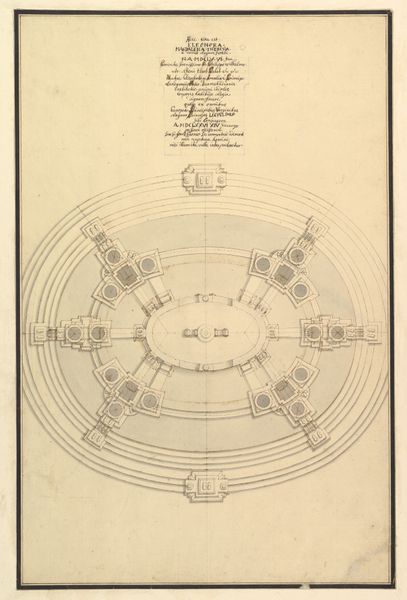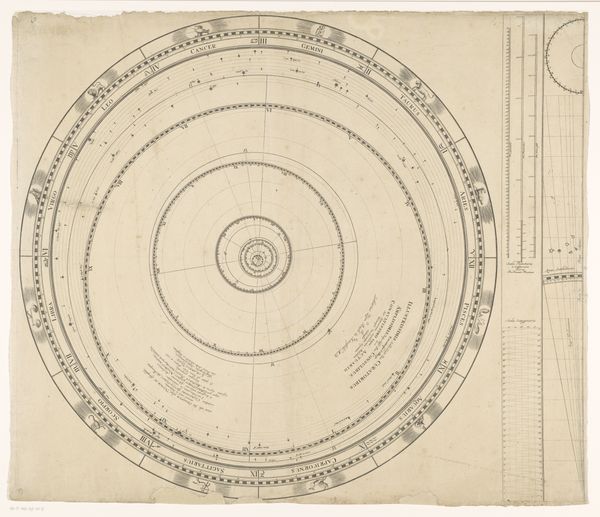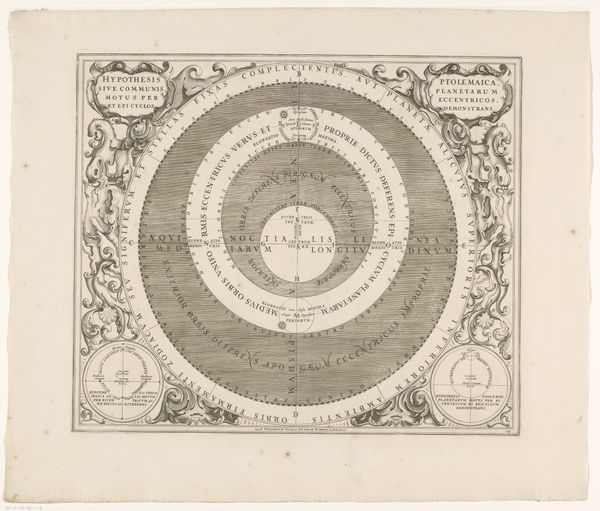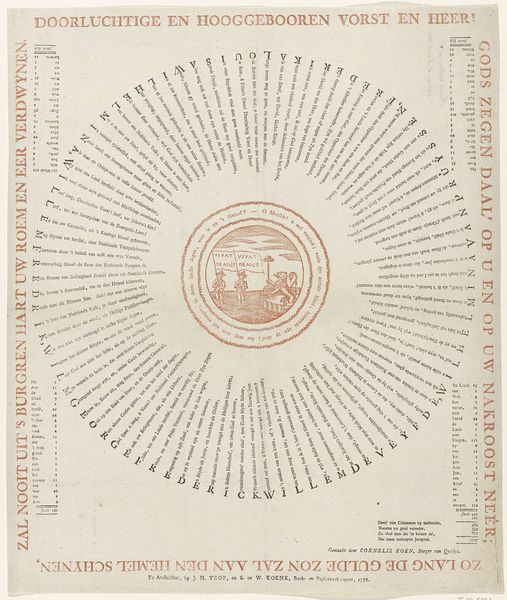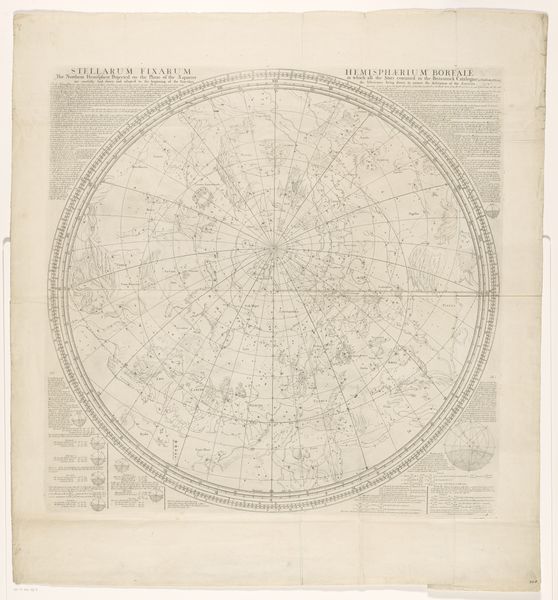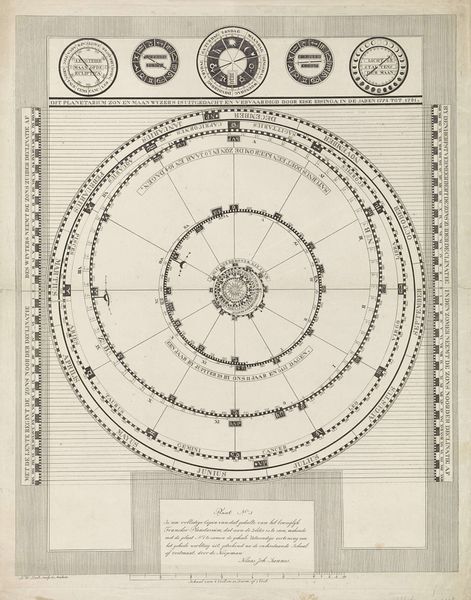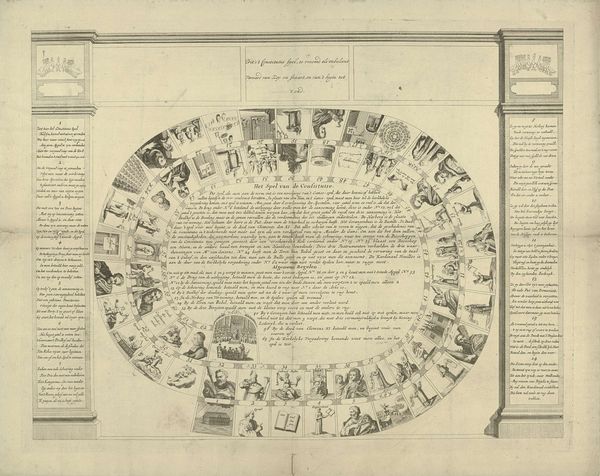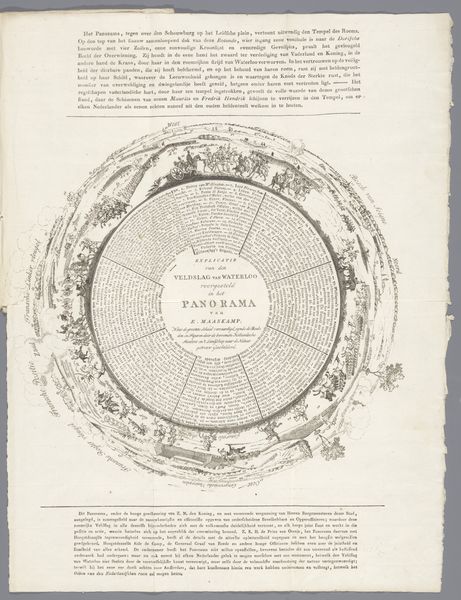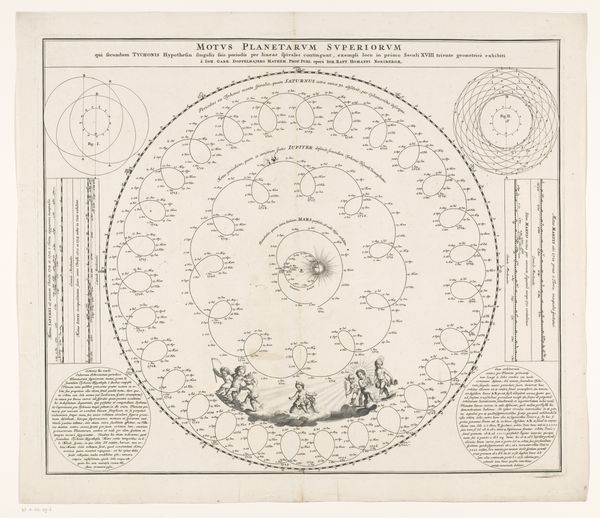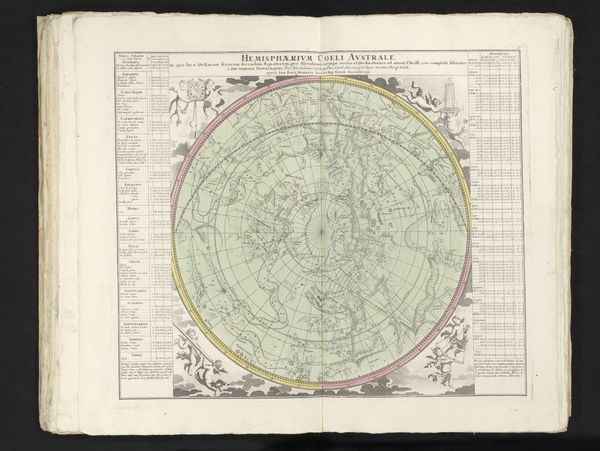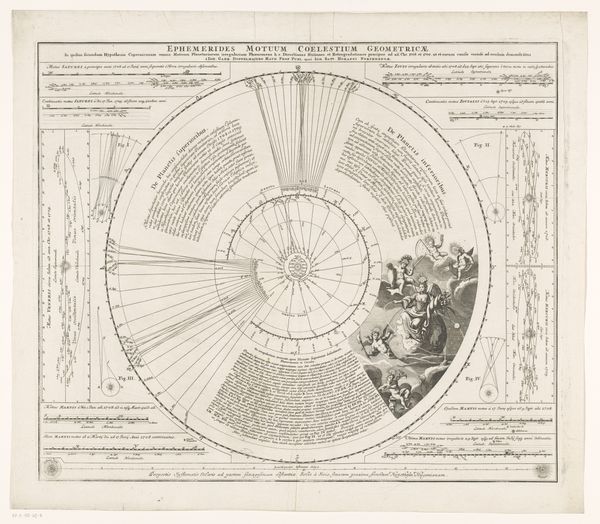
graphic-art, print, typography, engraving
#
graphic-art
#
neoclassicism
# print
#
typography
#
academic-art
#
engraving
Dimensions: height 520 mm, height 435 , width 432 mm
Copyright: Rijks Museum: Open Domain
Curator: Here we have "Comparison Scales for Measures and Weights," created around 1820 by Adriaan Gerrit van Prooijen. It’s an engraving, a piece of graphic art offering comparative scales for the weights and measures in use at the time. Editor: My first impression is of a beautifully rendered, almost clock-like diagram. The concentric circles and delicate typography give it an air of scientific precision, while the sheer volume of information seems… well, almost dizzying. Curator: It reflects the neoclassical and academic art styles, typical of its time. Note how the design emphasizes order and clarity. This wasn't simply about utility; it also conveyed a sense of rational progress and standardized knowledge, especially important when trade and governance relied on common systems. Editor: Exactly! The emphasis on radial symmetry creates a visual hierarchy. The circular organization invites you to compare these measures, encouraging almost a cartographic, comparative gaze at trade networks of that time. There's also something deeply satisfying in its structure. The engraving itself adds a layer; its materiality anchors it to the world of the hand-crafted, a human endeavour seeking to tame the abstract through the medium of ink and paper. Curator: And consider the context: various regions of the Netherlands, and beyond, still used vastly different measuring systems in the early 19th century. It's meant to standardize, but on another level, it captures the fractured reality it attempts to fix. The sheer detail reveals a desire for comprehensiveness and a faith in scientific measurement. Editor: That’s a wonderful point about the fractured reality! By trying to consolidate it all into a singular visual language, it unintentionally hints at a more dispersed pre-metric culture. What would have been familiar becomes categorized and measured by another scale. Curator: This work makes us think about our reliance on standardized metrics in today's society; it underlines how much we now take for granted and, I would say, what has also been lost in the process of standardization. Editor: Indeed! Seeing all these competing measurements offers a curious insight; an exercise in visualization, classification, and a very useful representation. I won't lie - now I want to trace one of those rings all the way around.
Comments
No comments
Be the first to comment and join the conversation on the ultimate creative platform.
